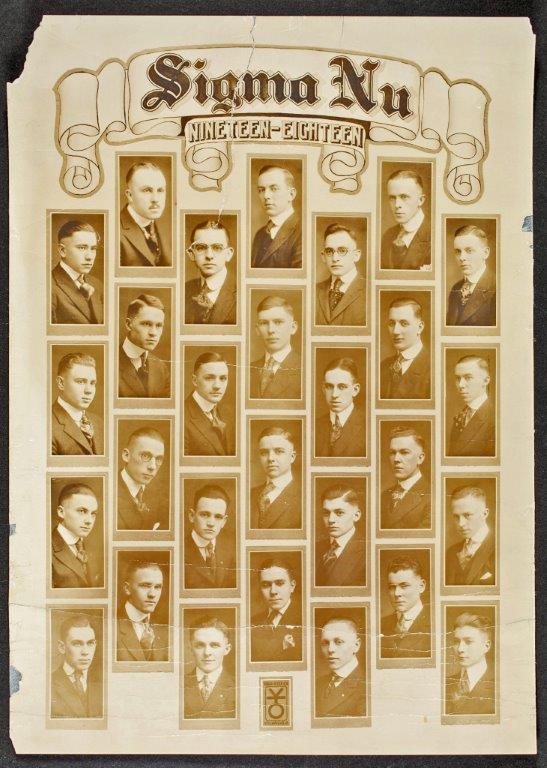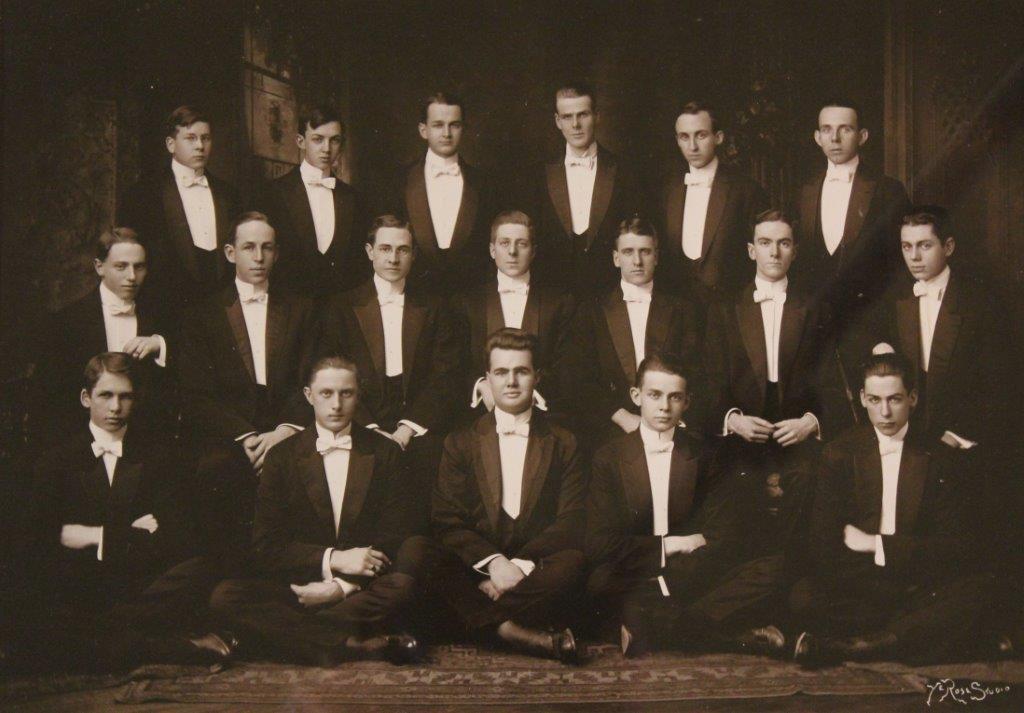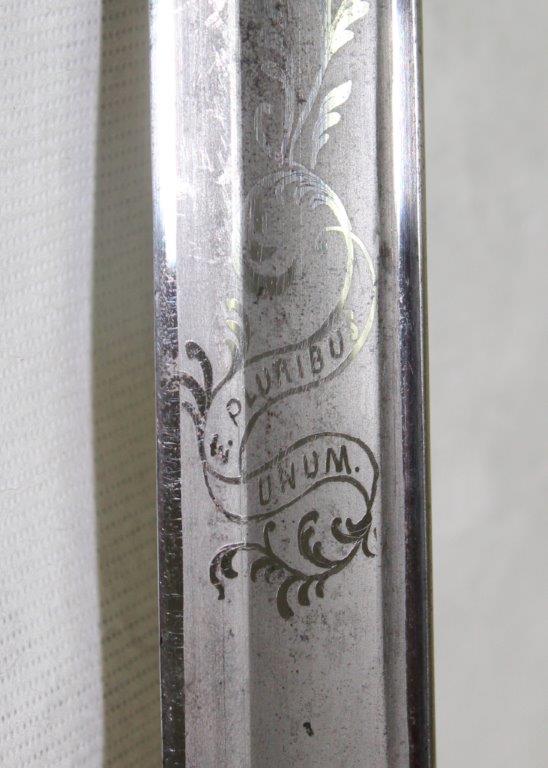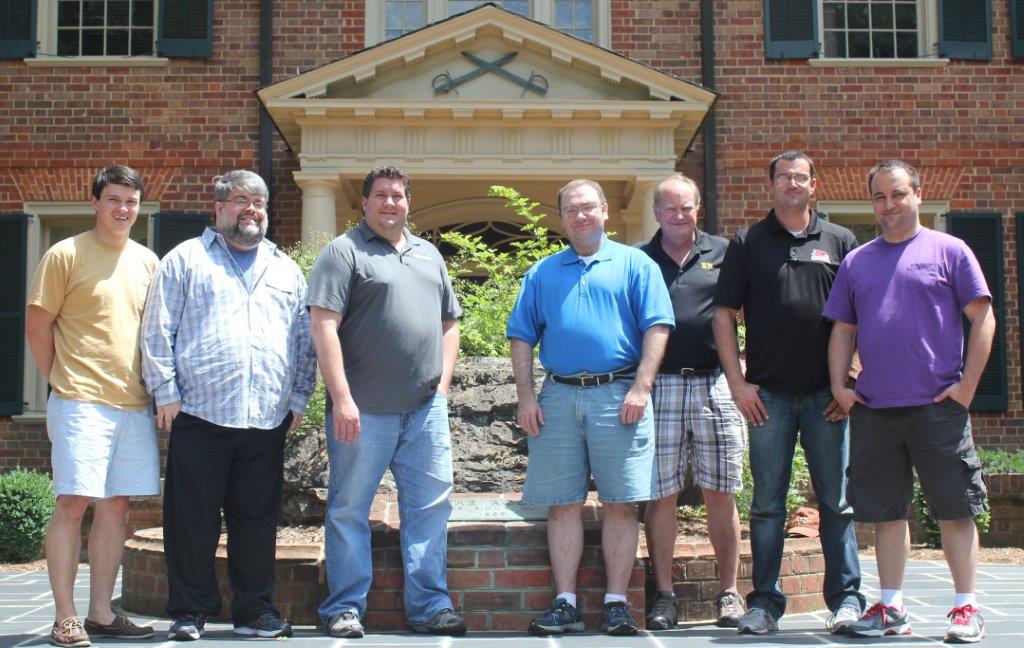Perspectives on Our Past
When considering a topic to discuss in this issue of The Delta, many possibilities came to mind. However, instead of focusing on one subject, I decided to touch on three related to our historical collection in Lexington. It’s been a marvelous summer for donations of items to the archives and furthering projects on the drawing board for a while.
To start out, I will talk about several donations we recently received – all of them photos around 100 years old. They provide a glimpse into a time when political events half-a-world away would soon engulf fraternity men and send them off to World War I.
Second, I’ll discuss one of the most significant items in our museum – one owned by James Frank Hopkins while he attended VMI.
Finally, I want to thank some brothers who have been a tremendous help in preserving our history through their recent volunteer efforts.
Recent Donations to our Historical Collection
To preserve our history for future generations, I’m always reaching out to alumni, chapters and heirs to donate items to our archives in Lexington. Here are some recent donations of photos added to our historical collection. Each one has a tale to tell; although, as I write this column, not all have fully disclosed their stories.
1918 Sigma Nu Composite

We received this item with little identifying information. It consisted of a composite of 28 photos (without names), with only the identifying marks “Sigma Nu” and “Nineteen-Eighteen.” This dearth of information made it difficult to connect to a particular chapter or individuals – especially since there were 86 active chapters in existence in 1918.
A previous owner stored the composite rolled up in a container tube; and it was very fragile and in poor shape. Due to the thinness of the paper and its long-term storage, any attempt to flatten it out could cause further irreparable damage to the item.
I could do little to identify the print further until it could go through a several month process involving increasing the humidity around it and gradually flattening it out. When this process was complete, I took a closer look for identifying clues. I found one small hint -- a tiny cartouche at the bottom with a symbol and a few words, “Orr-Kiefer” and “Columbus, O.” At last, I finally had more to work with than unidentified photos!
An internet search identified an Orr-Kiefer Studio Co., located in downtown Columbus, Ohio, operated from 1906 until 1952. However, I was unable to find out who purchased the studio after 1952 and might still have information on their photos and negatives.
So, when all else failed, I started over with what I knew. I knew it was a print of a Sigma Nu chapter, dated 1918 and likely in the Columbus, Ohio area. From that information, the obvious place to start was with the chapter located in Columbus; our Beta Nu Chapter at Ohio State University. Unfortunately, Sigma Nu closed the Beta Nu Chapter in 1991, making the chapter no further help.
Fortunately for those of us in the archival world, many universities have now digitized parts of their historical collection and put them online. I located an Ohio State 1918 yearbook (the “Makio”) and searched for Sigma Nu. Imagine the thrill I felt when one page was the same print I had in our archives, but with the addition of the names of those pictured. As a result, we can now identify all 28 men who appear on the composite.
A little bit of sleuthing, and good luck, means our historical collection now contains this 1918 composite (one of the oldest composites we have). The men pictured formed our Beta Nu Chapter on the eve of the 50th Anniversary of Sigma Nu’s founding in 1869.
1913 Delta Lambda Chapter (Brown University)

Another marvelous photo donated recently is a 1913 group photo of our chapter at Brown University. What makes this photo important is that it was taken only a year after the chapter received its charter on February 12, 1912.
Sigma Nu entered Brown University through a predecessor local chapter - Sigma Delta Kappa. Several Sigma Nu alumni from other chapters established the local fraternity in 1907. Their intention was to have it eventually petition to become a chapter of Sigma Nu – with the hoped for designation of “Delta Kappa Chapter”, thus, the name – Sigma Delta Kappa.
However, the process to get final approval for a charter took longer than expected; and the High Council installed the University of Delaware Chapter as Delta Kappa Chapter, ahead of the Brown Chapter. Thus, the High Council gave the Brown Chapter the next designation in order - Delta Lambda Chapter.
Unfortunately, only two of the eighteen individuals in the photo are identified on the back. However, both are original charter members of the chapter. They are in the second row: Earl W. Harrington (second from the left) and Thomas H. Roberts (fourth from the left). Earl Harrington (Delta Lambda 12) also had a son initiated into the chapter in 1938, Earl W. Harrington, Jr., (Delta Lambda 294.) Thomas Roberts (Delta Lambda 13) was also a member of Phi Beta Kappa, the oldest honorary society.
I expect future developments in facial software recognition may help identify others in the photo. Once that happens, I’m sure there will be other charter members pictured as well. The Delta Lambda Chapter went inactive in 1964.
1915 Grand Chapter (Denver, Colorado)

One hundred years ago in August, Sigma Nu’s 17th Grand Chapter met at the Brown Palace Hotel in Denver, Colorado. Another recent donation to the archives, is a photo of the delegates and guests in attendance. The photographer took it in front of the Brown Palace.
This Grand Chapter was the first one held in the western United States. It was also the first in many years held in summer rather than winter. One of the most significant items approved at this Grand Chapter was the reorganization of the High Council and administrative functions of the fraternity – including setting up a centralized office for the first time in Indianapolis. Walter J. Sears, the author of The Creed, was elected Regent.
James Frank Hopkins’ VMI Sword

On my most recent trip to Lexington, I spent time in the Sigma Nu museum. I paused before the display case housing the VMI sword used by Cadet James Frank Hopkins during his time at VMI from 1866-1870. It is in a display case that also contains a sword that belonged to Greenfield Quarles and the Bible that General Francis H. Smith gave the two cadets at their commencement on July 4, 1870.
I was specifically interested in finding additional information on Hopkins’ sword. William T. “Terry” Feild, the first initiate of our Arkansas Chapter, donated the sword to the museum.
He first met Brother Hopkins in 1903. Feild was working with a group of petitioners at Arkansas seeking a charter from Sigma Nu. Unfortunately, they were denied. Feild, never one to give up, found that two of the Founders still lived in Arkansas. He made it his purpose to visit them to obtain their endorsement on the group’s petition. He made his initial visit on a Sunday and spent the entire afternoon with Hopkins. After that first visit, he made several trips to Mabelvale, where Hopkins lived, and they remained good friends for the rest of the Founder’s life. Upon his death, Founder Hopkins left several of his Sigma Nu related items to Feild to preserve.

In the 1950’s, Terry Feild donated his Hopkins’ memorabilia to Sigma Nu headquarters. The fraternity placed these items on display in the newly completed museum wing in 1969.
Being curious about the background of the sword, I took it to a local expert – Colonel Keith Gibson. Colonel Gibson is Executive Director of the VMI museum system and is a recognized authority on matters relating to the Civil War and VMI, including armaments.
Based on his inspection, he feels confident the sword is an 1850 model mounted officer’s sword and dates to around 1860. The manufacturer, Ames Manufacturing Company of Chicopee, Massachusetts, is clearly etched on the reverse ricasso of the blade. Ames was the most famous of the 19th-century sword makers, starting with its first contract with the U.S. in 1832. It was the preferred supplier for the US Government, state militias, foreign governments and many private purchasers.
A “mounted” officer or soldier was different from a cavalryman. While they rode horses between the various engagements, once the battle began, they dismounted and fought on foot. Typically the cavalry would enter the battle mounted and stayed that way as long as possible. Soldiers mainly used the 1850 model until the early 1870’s.
Shark or ray skin covers the grip (handle), and is held on by brass wire winding around the hilt thirteen times. The blade is etched on one side by a panoply of arms with “US” (although no date), and the other with “E Pluribus Unum” in ribbon. This sword was commercially purchased, since there was no date of manufacture or U.S. inspector’s markings on it. Since the Union troops destroyed VMI during the war, and there was little in available resources to provide proper uniforms for the cadets, it’s logical that each cadet would have to procure his own sword.
As a Captain of the Corps of VMI cadets in his senior year, I’m sure Hopkins would have worn and displayed this sword proudly at every dress parade and ceremonial event. Since he was the original author of Sigma Nu’s first ritual, it is likely he used this sword in many of the very first initiations into the Legion of Honor. When he returned to Arkansas after graduating, my guess is he hung it in a very special place in his house. There it served as a constant reminder of his youth at VMI and in Sigma Nu. We are fortunate to have this beautiful sword in our historical collection and on display in our museum for all visitors to see.
Volunteer Efforts
I’ve been fortunate during my time as Grand Historian to have tremendous help in arranging, processing and cataloging items in our historical collection. There are two groups I’d like to single out in this column for particular recognition.
Our Lambda Chapter is at Washington & Lee University, right here in Lexington. I connected with them several years ago when I saw an online tour of Sigma Nu historical sites in Lexington. The chapter’s candidate class produced the video, and they did an excellent job of creatively scripting and filming it. Impressed, I went to the chapter house to congratulate them on an outstanding job.
That started a marvelous relationship with the young men at Lambda that I’m still enjoying. When I’m in Lexington, members constantly volunteer to come to headquarters in the evening to help me on different projects in the archives. Not only do I welcome their assistance and comradery while we work, but it always helps me gain perspective as to how important our history is to those who follow us. I salute each of them for their kindness to me over the years, as well as their friendship – particularly, Alex Retzloff, Paul Reilly, Zach Howard Austin Peterson and Ryan Scott, among others.
Earlier this summer, I planned an alumni volunteer weekend in Lexington. The idea was to attract a small group of alumni who were interested in preserving our history. Not only did they pay for their own transportation and lodging in Lexington (we provided the meals), but the weekend coincided with Father’s Day on June 21st. Despite those hurdles and a limited amount of working space, seven alumni volunteered to spend the entire three-day weekend working in the archives – including one all the way from San Diego. We spent the whole time sorting, cataloging, processing and preparing files for digitization – as well as just discussing our rich history and enjoying one another’s company.

Four of the volunteers were from our Mu Kappa Chapter at Southeast Missouri State University (Chris Foeste, Chadd Peck, John Baltz and Kris Oliveira). We also had one from our Theta Tau Chapter at Morehead State University (Mike Esposito) and another from our Gamma Delta Chapter at Stevens Institute of Technology (Matthew Smith). The final and seventh member was from my Eta Kappa Chapter at San Diego State (Jim Stark). The feedback I received was that everyone thoroughly enjoyed the weekend and spending time at headquarters to learn more about Sigma Nu’s rich history. Based on the positive responses, I plan to hold future annual alumni volunteer weekends.

Additionally, the following weekend, two members of the Sigma Nu Educational Foundation Board of Directors helped me out. Jason Lyons (Philadelphia College of Textiles & Sciences) and Joe Gilman (Morehead State and Georgia), and his wife Susan, assisted in various projects. These two brothers have a long-time passionate interest in our history and have always been extremely supportive of our preservation efforts.
Thanks to all of you volunteers and the many members of our full-time staff who are always willing to pitch in to help us preserve our almost 150-year old history. Since it’s our history, traditions and heroes that bind us together as a fraternity, it is incumbent upon us to make sure we never lose that knowledge through neglect or indifference.